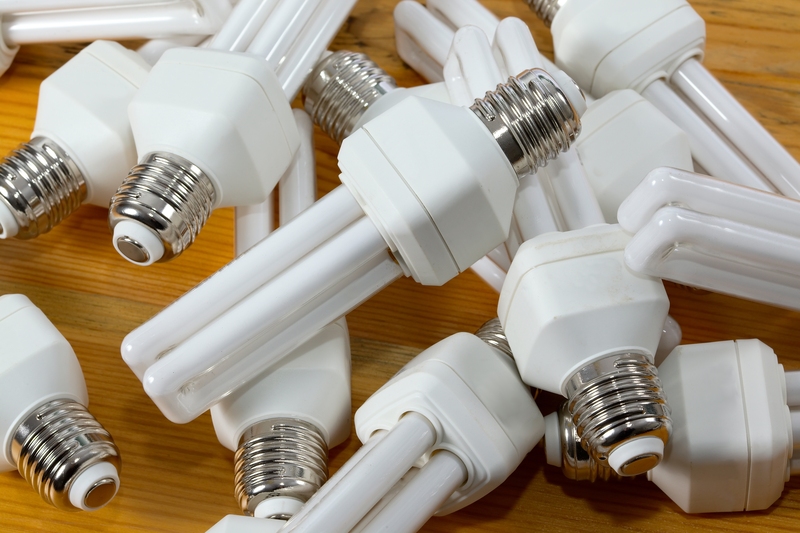Eco-Friendly Approaches to PPE Waste Disposal: A Comprehensive Guide
The global pandemic has exponentially increased the use of Personal Protective Equipment (PPE) such as masks, gloves, gowns, and face shields. While these items have been vital in curbing the spread of diseases, their improper disposal presents a daunting environmental challenge. With tons of PPE waste generated daily, it is crucial to adopt sustainable and eco-aware practices for disposing of PPE waste. In this article, we delve into various eco-friendly approaches to PPE waste disposal, their benefits, challenges, and actionable steps for individuals, institutions, and industries.

Why Eco-Friendly PPE Waste Disposal Matters
Traditional methods of PPE disposal, such as incineration and landfilling, have significant environmental repercussions. Burning PPE releases harmful chemicals and greenhouse gases, while landfilling leads to persistent plastic pollution. Furthermore, discarded PPE can leach microplastics into soil and waterways, posing threats to wildlife and human health alike. Therefore, adopting green PPE waste disposal techniques is essential for safeguarding our environment, ensuring human well-being, and promoting a sustainable future.
Key Environmental Concerns of PPE Waste
- Plastic Pollution: Most PPE, such as surgical masks and gloves, contain plastics like polypropylene which do not biodegrade easily.
- Microplastic Formation: Fragmented PPE items contribute to the growing problem of microplastics in oceans and soils.
- Toxic By-products: Incineration of PPE can release dioxins, furans, and other toxins into the atmosphere.
- Wildlife Hazards: Animals can mistake PPE for food, leading to ingestion or entanglement.
Innovative and Sustainable Approaches to PPE Waste Disposal
To address these environmental issues, researchers and waste management experts have devised a range of eco-friendly PPE waste treatment techniques. Below are some of the most promising strategies:
1. Segregation at Source
The first step towards responsible PPE waste management is source segregation. By separating used PPE from general waste, recycling and safe disposal become easier and more effective.
- Clear Labeling: Use designated bins marked for PPE waste in workplaces, hospitals, and public areas.
- Color Coding: Adopt internationally recognized color codes (like red or yellow bags) to prevent contamination.
- Awareness Campaigns: Educate the public on the importance of segregating PPE waste.
2. Recyclable and Biodegradable PPE
One of the most transformative solutions to the PPE waste crisis lies in developing alternatives made of biodegradable or recyclable materials.
- Bioplastics: PPE made from materials like PLA (polylactic acid) can naturally degrade under composting conditions.
- Closed-Loop Recycling Programs: Initiatives to collect and recycle PPE into new products such as plastic lumber and construction materials are gaining traction.
- Compostable Face Masks and Gloves: Research is ongoing into PPE that must meet safety standards yet break down in natural environments.
3. High-Efficiency Disinfection and Reuse
Certain types of PPE can be disinfected and safely reused, reducing both their overall consumption and resultant waste.
- UV-C Sterilization: This technique decontaminates PPE using ultraviolet light, extending its usable lifespan.
- Hydrogen Peroxide Vapor (HPV): Widely used in hospitals, HPV decontaminates PPE for repeat use in critical situations.
- Autoclaving: Steam sterilization is effective for specific types of PPE made to withstand high temperatures.
While not all PPE can be reused, these methods are valuable in controlled settings like healthcare institutions.
4. Mechanical and Chemical Recycling
Extensive research is underway to devise eco-friendly PPE disposal methods via recycling. The two main approaches include:
- Mechanical Recycling: Involves shredding, washing, and processing plastics from PPE to manufacture secondary products, such as outdoor furniture or construction boards.
- Chemical Recycling: Converts PPE plastics to their constituent monomers or other chemicals, which can then be re-used to make virgin-quality materials.
These closed-loop strategies help minimize resource extraction and plastic pollution.
5. Waste-to-Energy (WTE) Strategies
While incineration is generally discouraged, modern WTE plants feature advanced filtration systems that transform PPE waste into usable energy while minimizing emissions.
- Controlled Incineration: Incinerators with stringent emission controls can convert PPE waste to electricity or heating fuel.
- Pyrolysis: This process thermally decomposes PPE waste in the absence of oxygen, producing oil, gas, and char without releasing harmful emissions.
- Gasification: Converts organic PPE waste into syngas (synthetic gas) which can be used to generate electricity.
These processes recover energy values from waste that cannot be recycled, preventing landfilling.
6. Decentralized Community Initiatives
Grassroots and community-based projects have shown promise in managing PPE waste locally.
- Collection Drives: Community groups organize PPE-specific waste collection days, ensuring safe and sustainable handling.
- DIY Composting Experiments: Some eco-conscious communities experiment with composting biodegradable PPE using monitored batches.
- Partnering with Local Recyclers: Connecting with small recycling enterprises can facilitate innovation and job creation in waste management.
Challenges in Implementing Eco-Friendly PPE Waste Disposal
Despite promising advancements, there are still several obstacles to establishing sustainable PPE waste disposal systems on a large scale. Here's what stands in the way:
- Safety Concerns: Handling potentially infectious PPE requires strict protocols to prevent disease transmission.
- Material Composition Limitations: Many PPE items contain layers and chemicals that complicate recycling or composting.
- Lack of Standardization: The absence of universal guidelines for eco-friendly PPE disposal can lead to confusion and inefficiency.
- Economic Constraints: Sustainable options can be costlier than conventional disposal, limiting their adoption, especially in low-resource settings.
- Low Public Awareness: There is a need for greater education around safe and environmentally responsible PPE disposal.
Best Practices for the Public and Organizations
Individuals play a pivotal role in minimizing the environmental burden of PPE waste. Here are tangible steps everyone can take:
- Use Reusable PPE: Opt for high-quality, washable masks and gloves where possible and safe.
- Dispose Responsibly: Follow local guidelines for PPE disposal, ensuring segregation and using appropriate bins.
- Don't Litter: Never discard used PPE on streets, parks, or natural environments.
- Support Green Alternatives: Purchase PPE made from biodegradable or recycled materials whenever available.
- Advocate and Educate: Spread awareness in your community about responsible PPE waste disposal methods.
Businesses, healthcare providers, and institutions should consider:
- Implementing Segregation Protocols: Make designated PPE disposal stations accessible.
- Partnering with Specialist Recyclers: Engage with companies that specialize in recycling or recovering energy from PPE waste.
- Investing in Staff Training: Ensure employees understand and follow biohazard and sustainable waste management guidelines.
- Tracking Waste Generation: Monitor and document the amount of PPE used and disposed to identify opportunities for waste reduction.
Global Innovations and Success Stories
Several countries and organizations are leading the way in sustainable PPE waste disposal. Notable examples include:
- The United Kingdom: The NHS has piloted recycling schemes to convert PPE waste into reusable plastic products.
- India: Startups are developing PPE recycling facilities that process millions of masks and gloves monthly.
- Canada: Municipalities have launched public awareness campaigns and set up PPE recycling drop-off points in urban centers.
- Singapore & Japan: Advanced WTE plants process medical and PPE waste with minimal emissions.
These initiatives offer valuable lessons for other communities and countries seeking to adopt sustainable PPE waste management practices.

Future Trends in Environmentally Friendly PPE Waste Solutions
As technology evolves and awareness grows, the future of eco-friendly PPE waste disposal looks increasingly promising. Trends to watch include:
- Smart PPE: Integration of biodegradable sensors and materials for easier recycling or composting.
- Enhanced Biodegradable Materials: Next-generation bio-based plastics and natural fibers in PPE production.
- Internet of Things (IoT) Waste Tracking: Connected bins and waste tracking technologies to optimize collection and processing.
- Green Procurement Policies: Mandating eco-friendly PPE in institutional purchases.
- International Collaboration: Sharing best practices, standards, and recycling technologies across borders.
Conclusion: Our Collective Responsibility
Properly managing PPE waste in an eco-friendly manner is crucial for preserving environmental health, human safety, and the well-being of future generations. Sustainable PPE waste solutions demand innovation, broad participation, and shared responsibility among governments, businesses, and the public. By embracing green PPE disposal techniques, supporting biodegradable alternatives, advocating for better policies, and raising awareness, we can collectively reduce the environmental impacts of protective equipment and create a safer, cleaner planet.
Let's work together to make PPE waste management an example of responsible and sustainable environmental stewardship!
Frequently Asked Questions (FAQ) about Eco-Friendly PPE Waste Disposal
- Q: Can all PPE be recycled?
A: Not all PPE is currently recyclable due to its complex materials and potential contamination. However, advancements in technology are expanding recyclability options, especially for masks and gloves. - Q: Is biodegradable PPE as effective as traditional PPE?
A: Biodegradable PPE must meet strict safety and filtration standards. Many modern biodegradable options offer equivalent protection, but always check certification before use. - Q: What should I do if there are no designated PPE waste bins?
A: Place used PPE in a sealed bag before disposing it with your household waste, and encourage local authorities to install proper bins. - Q: Can I compost used PPE at home?
A: Only compost PPE if it is certified as home-compostable. Otherwise, follow local waste disposal guidelines.
For more information on eco-friendly approaches to PPE waste disposal, consult your local environmental or waste management authority, and stay updated on emerging sustainable solutions.
